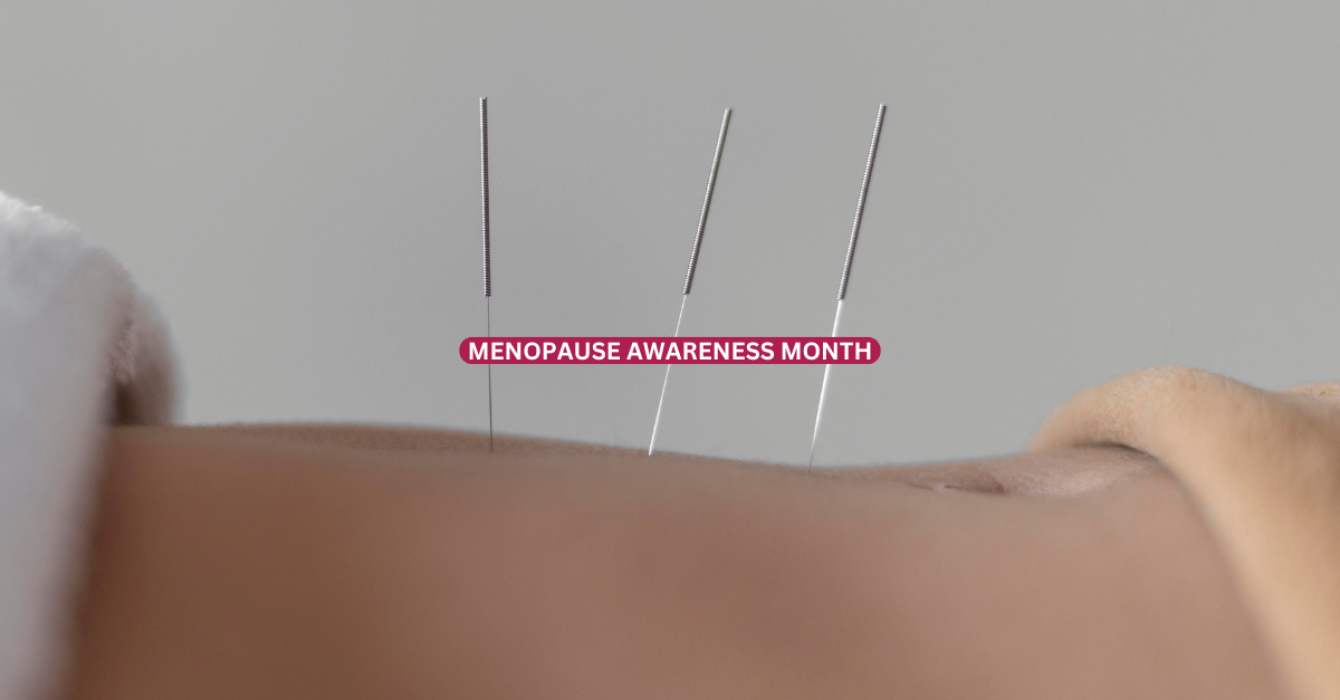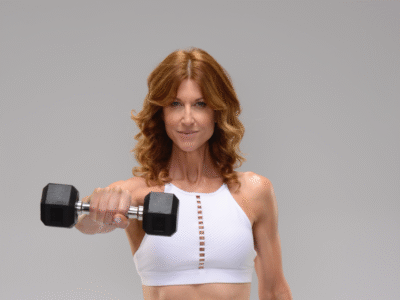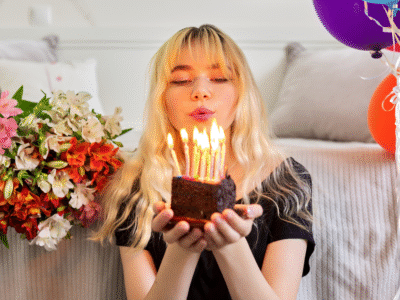Alternative therapies are far from woo-woo nonsense — these holistic and natural methods are proven by science to help ease menopausal symptoms.
Sign our petition asking for menopause support to be increased on the NHS.
For women grappling with a smorgasbord of peri- and postmenopausal symptoms (which will both be referred to as ‘menopause’ in this article), it can be tempting to try every ‘meno cure’ going viral on social media — particularly if you’re keen to avoid mainstream medication such as hormonal replacement therapy (HRT). But can natural and holistic treatments really help you in menopause, or is it all empty promises and woo-woo?
Leading functional health and women’s wellness doctor, Dr Mayoni Gooneratne of Human Health, is a firm believer that eating well, sleeping properly, moving joyfully and nurturing your relationships — what she calls the pillars of human health — go a long way in improving the menopausal journey.
Read more: Perimenopause vs menopause explained

“If a woman is really optimising these areas there’s a good case for her to not need HRT to manage perimenopause and menopause,” she says. “[But] navigating menopause can be challenging, and many women seek natural therapies and holistic treatments, such as acupuncture and meditation, to alleviate symptoms.”
However, she stresses that for some women, HRT is still worth considering for its positive impact on brain function, bone and heart health — and it can be taken alongside any alternative methods.
If you’re looking for natural and holistic ways to ease any menopausal woes, you face a world of choice: from ancient techniques grounded in traditional Chinese medicine (TCM), to yogic philosophy and Instagram-friendly wellness trends. But what really works?
Here are five alternative ways to feel good during menopause, which are scientifically proven to make a difference.
Read more: Menopause treatments to discuss with your doctor (from HRT to non-hormonal options)

Acupuncture for menopause symptoms
This branch of TCM, practised for thousands of years, is based on the concept of balancing energy flow (or qi) by inserting small needles into the body to stimulate specific points. Both physical ailments (such as joint pain and migraine) and emotional issues (such as stress and anxiety) are often treated with acupuncture.
Results from a randomised controlled trial, published in the journal Menopause, showed that acupuncture significantly reduced the frequency of hot flushes, compared to when participants received no treatment. “It’s also been shown to improve mood and reduce sleep disturbances,” adds Dr Gooneratne.
Acupuncture is sometimes available on the NHS, but you may need to book privately. Find an accredited acupuncturist near you via the British Acupuncture Council.
Laughter therapy
Can you laugh away your menopause symptoms? This technique may sound like a joke, but it has serious wellbeing benefits. Research backs claims that the cortisol-reducing and endorphin-boosting properties of a good belly laugh can help lessen typical menopause symptoms such as stress, joint pain, fatigue and brain fog. Plus, a Korean study found that after five 30-minute sessions of laughter therapy, menopausal women reported increased levels of optimism and self-esteem, and lower levels of depression than the control group.
Laughter is known for being contagious (we’re 30 times more likely to laugh with others than on our own), so a typical laughter therapy session (or laughter yoga, which is a strand of the therapy) will involve playful movement, stretching, improvisation and a lot of laughter within a group setting. The initial forced laughter quickly gives way to uncontrollable giggles, which apparently leave you buzzing.
Google ‘laughter therapy/yoga near me’ for a local class; watch an online session by laughter therapists at laughter-yoga.co.uk; or giggle along with master laughter yoga trainer Lotte Mikkelsen of United Mind Laughter Yoga on Instagram.
Read more: 5 of the best forms exercises for perimenopause and beyond

Meditation and mindfulness
Slow, quiet and relaxing is a powerful mix during menopause. “Practices such as meditation and tai chi can help manage stress, improve mood and enhance overall wellbeing,” suggests Dr Gooneratne, who cites a scientific review that concluded mindfulness-based methods were effective at improving the quality of life for menopausal women.
Laura Dodd, founder of The Yoga Class, recommends meditative breathwork exercises to manage menopausal symptoms with the ‘extended exhale’ her favourite.
“This is brilliant for calming the mind and reducing anxiety, quickly. Focus on releasing stress a little more with each exhale,” she says.
To try it for yourself at home, follow these steps:
- Find a quiet space and sit comfortably with your back straight and shoulders relaxed.
- Then take a deep inhale through the nose for a count of four, filling your lungs completely.
- Then exhale gently through your nose or mouth for a count of eight.
- Pause and repeat. Continue the cycle for five to 10 minutes.
Read more: Meet the women who started perimenopause in their 30s

Yoga for menopause
Similar to the above, the slower, gentler end of the yoga scale (such as yin yoga) can help promote relaxation. Laura suggests: “These restorative poses will help manage anxiety, disturbed sleep and mood swings by activating the vagus nerve, which calms the nervous system. To enhance relaxation, practise deep belly breathing while remaining in each pose for at least three minutes.”
Here’s three moves to try at home:
Reclining bound angle pose: Lie on your back with the soles of your feet together and knees falling outward, supported by cushions under the knees and back. This opens the hips, relieves tension and induces deep relaxation.
Supported bridge pose: Lie on your back, bend your knees and place your feet hip-width apart. Lift your hips and place a block or bolster under your sacrum for support. This relaxes the lower back, relieves fatigue, and supports the vagus nerve by opening the chest and diaphragm.
Child’s pose: Sit on your heels, fold forward, and rest your forehead on the mat or a block. Extend your arms forward or rest them by your sides. This relieves stress and anxiety, stimulates the vagus nerve and grounds the mind.
Cold water swimming
It seems like everyone is donning a neoprene swimsuit and jumping into the sea or a freezing lake nowadays. But if you think this sounds like the very opposite of fun, you may change your mind when you discover how swimming in cold temperatures (defined as anything under around 15C but usually closer to 10C or under during winter) is great for menopause.
When University College London recently surveyed 785 menopausal women who regularly swam in cold water, they discovered that 47% said it helped their anxiety, 35% said mood swings had lessened and 31% said hot flushes had reduced.
If you’re new to cold water (aka wild) swimming, take it slowly as you need to acclimatise your body to lower temperatures. Cold showers will help build up your resistance, as well as deliver some of the menopause-soothing benefits of cold water exposure. Joining your local wild swimming group is the safest way to start, and you’ll probably meet likeminded women on a similar menopausal journey. The Outdoor Swimming Society shares advice for beginners to seasoned cold dippers.













